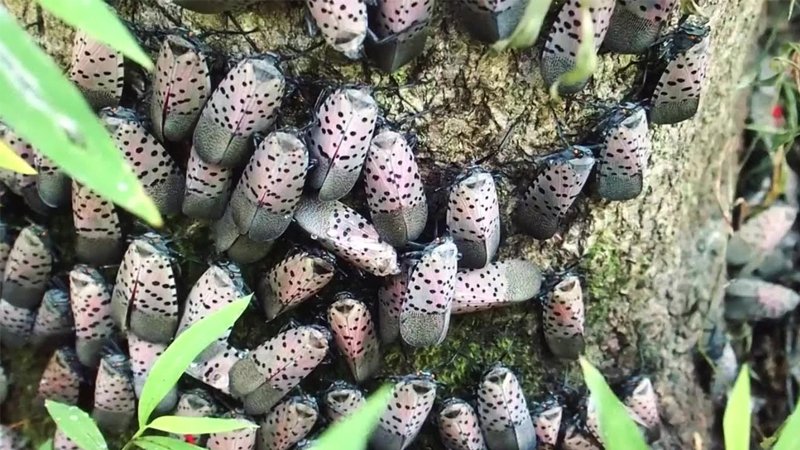Jonathan Larson knew that spotted lanternfly would be such a problem that he became an expert in the field before they ever found their way into his state.
"I just wanted to prepare people because the wolf is at the door," said Larson. "I hate when people are surprised by invasive species. It's better to have some knowledge in your back pocket."
Larson earned a bachelor's degree at Purdue and was fast-tracked in the Ph.D. program at Kentucky by UK entomologist and former USGA Green Section Award winner Dan Potter, Ph.D.
Spotted lanternfly is an invasive species that came to the U.S. in 2014 on a shipping freighter. It was first found here in Pennsylvania in packing material.
According to the U.S. Department of Agriculture, spotted lanternfly is now found in 14 states, but Larson says it is probably more than that now.
They have no role in the ecosystem. They serve no grand purpose except to be food for something else that eats them. The problem is they reproduce so quickly that it is hard for their enemies in the U.S. to keep up with them.
That list includes Connecticut, Delaware, Indiana, Maryland, Massachusetts, Michigan, New Jersey, New York, North Carolina, Ohio, Pennsylvania, Rhode Island, Virginia and West Virginia.
There is only one generation of spotted lanternfly a year in the U.S. Adults mate in late august and early autumn, lay their eggs, which are covered in a brown smear that helps them survive over winter until spring when they hatch and the life cycle begins all over again.
Unlike other invasive insects like the elm bark beetle, or emerald ash borer that chew into trees and ultimately kill them, spotted lanternfly is just a nuisance pest that invade in huge numbers then feed off the sap of several varieties of trees and poop out a sticky excrement that falls on whatever is underneath the tree, which might include golfers and golf cars. It also attracts other unwanted visitors like yellow jackets.
"They constantly go to the bathroom, and that sticky excrement attracts sooty mold and stinging insects," Larson said "It doesn't do any damage, but a lot of people don't want to be outside near these insects. They're odd looking, and they'll get on your or get tangled in your hair. And they just go to the bathroom all the time. It's like if you just drank Mountain Dew all day every day, you'd just go to the bathroom all day, too."

The adults also will lay their eggs on just about anything, which helps facilitate their interstate spread, Larson said.
"The egg case looks like a muddy smear, and there are about 40 or so eggs under this brown coating," he said. "You expect them to lay their eggs on shrubs and trees, but they'll lay them on firewood, cars, trains, paver sones, just about anywhere.
"They're getting thicker in Cincinnati. Let's say you drive there in the fall. A female crawls in the wheel well of your car, lays her eggs then you drive back home. Nobody noticed the hitchhiker they just brought home."
Tree of heaven is their preferred place to congregate and feed, but often any port in a storm will do and they'll attack any one of dozens of other species.
When they find a tree on which to feed, they often swarm in by the hundreds and sometimes thousands, Larson said, making them virtually impossible to control once they have been detected.
The best option for superintendents is to remove tree of heaven if it grows in out-of-play areas, or inject desired or strategic trees with a neonicotinoid class of insecticide like dinotefuran.
I just wanted to prepare people because the wolf is at the door. I hate when people are surprised by invasive species. It's better to have some knowledge in your back pocket.
"They feed on the trees as nymphs and adults," Larson said. "That will kill them."
The spotted lanternfly also is equipped with a built-in self-defense mechanism.
"They are black with white spots through the third install stage. The tree of heaven has a smell of rotten peanut butter," Larson said. "They are able to ingest that and sequester that, and that makes them taste bad to predators."
Still, there are a few things in the U.S. that will eat the spotted lanternfly. Those predators include common garden spiders, some species of praying mantis and chickens.
"They have no role in the ecosystem. They serve no grand purpose except to be food for something else that eats them," Larson said "The problem is they reproduce so quickly that it is hard for their enemies in the U.S. to keep up with them."

